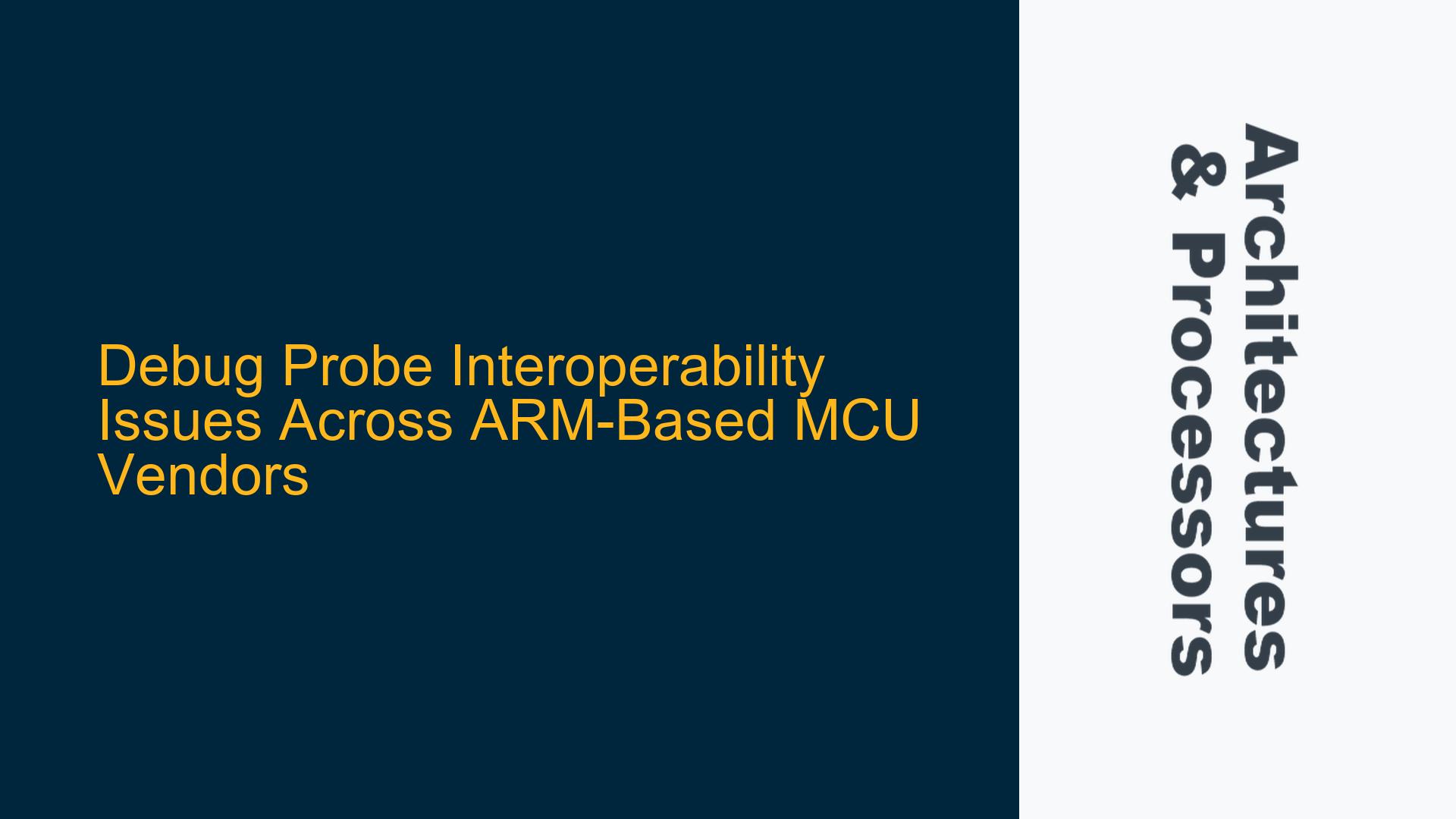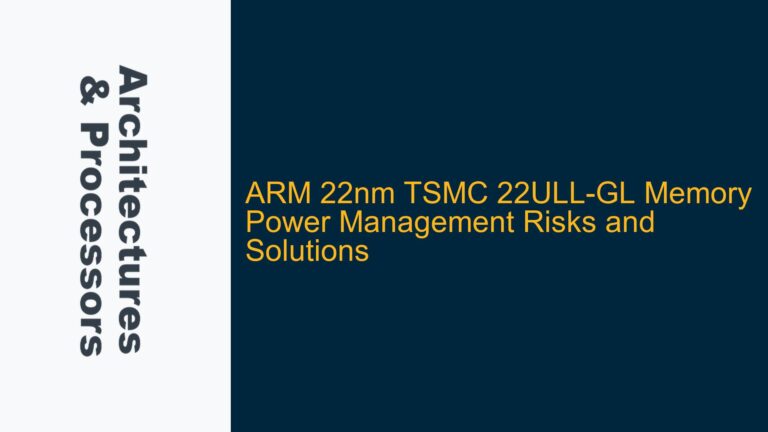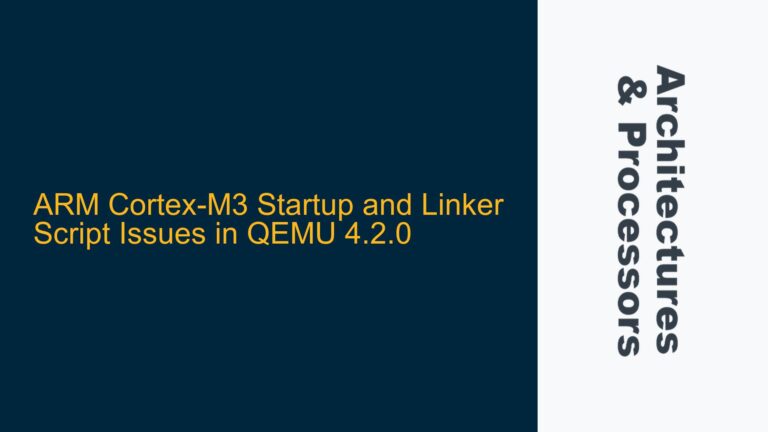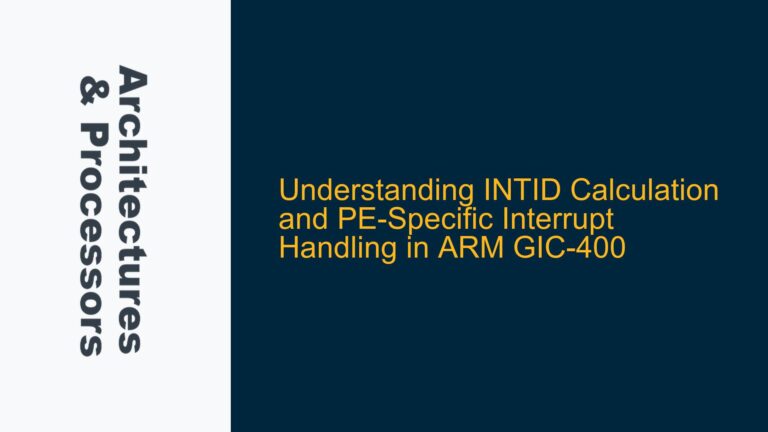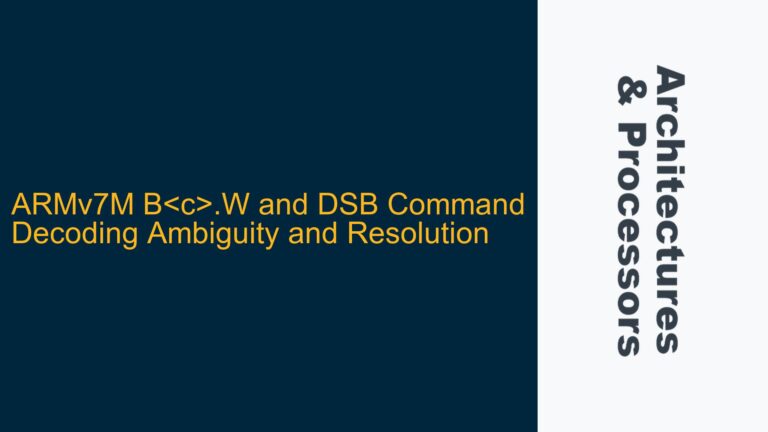CMSIS-DAP and RDI/JLINK Debug Probe Compatibility Challenges
The interoperability of debug probes across different ARM-based microcontroller vendors is a critical concern for embedded systems engineers. Debug probes such as CMSIS-DAP and RDI/JLINK are essential tools for debugging and programming ARM Cortex-M and Cortex-A processors. However, their compatibility across vendors like NXP, STMicroelectronics (STM), and Silicon Labs (Silabs) is often unclear due to vendor-specific restrictions, firmware limitations, and proprietary protocols. This post delves into the core issues surrounding debug probe interoperability, explores the underlying causes, and provides detailed troubleshooting steps and solutions to address these challenges.
Vendor-Specific Restrictions and Protocol Licensing
The primary issue with debug probe interoperability stems from vendor-specific restrictions and the licensing of proprietary protocols. CMSIS-DAP, an open standard developed by ARM, is theoretically vendor-agnostic and should work across all ARM-based microcontrollers. However, vendors often implement custom firmware or hardware restrictions that limit the functionality of CMSIS-DAP probes to their own MCUs. For example, NXP’s LPC-LINK2 debug probe, which supports CMSIS-DAP firmware, is primarily marketed for NXP MCUs, and its compatibility with STM or Silabs MCUs is not guaranteed.
On the other hand, RDI/JLINK probes, developed by Segger, use a licensed protocol that is more restrictive. While Segger’s JLINK probes are known for their broad vendor support, third-party implementations of the RDI protocol (such as those found in ST-LINK or Silabs debug probes) may not offer the same level of compatibility. This is because Segger licenses its protocol to specific vendors, and these licenses often come with limitations on cross-vendor usage. For instance, ST-LINK probes, which use a proprietary protocol, are optimized for STM MCUs and may not fully support debugging NXP or Silabs MCUs.
The licensing and vendor-specific restrictions create a fragmented ecosystem where engineers must carefully evaluate the compatibility of their debug tools with the target MCUs. This fragmentation is further exacerbated by the lack of clear documentation from vendors regarding cross-vendor interoperability, leading to confusion and inefficiencies in the development process.
Firmware Limitations and Hardware Constraints
Another significant factor contributing to debug probe interoperability issues is the firmware and hardware constraints imposed by vendors. Debug probes like CMSIS-DAP and RDI/JLINK rely on firmware to translate high-level debugging commands into low-level signals that interact with the MCU’s debug interface. However, vendors often customize this firmware to optimize performance for their specific MCUs, which can inadvertently limit compatibility with other vendors’ devices.
For example, NXP’s LPC-LINK2 debug probe, when flashed with CMSIS-DAP firmware, may not fully support the debug features of STM or Silabs MCUs due to differences in the implementation of the ARM CoreSight Debug Interface. Similarly, ST-LINK probes, which use a proprietary firmware, may lack support for certain debug features or memory regions in NXP or Silabs MCUs. These firmware limitations are often undocumented, making it difficult for engineers to predict whether a specific debug probe will work with a given MCU.
Hardware constraints also play a role in limiting interoperability. Debug probes are designed with specific voltage levels, pinouts, and signal timings that may not align with the requirements of other vendors’ MCUs. For instance, ST-LINK probes are optimized for STM’s 3.3V logic levels, which may not be compatible with NXP or Silabs MCUs that operate at different voltage levels. These hardware mismatches can lead to unreliable debugging sessions or even damage to the debug probe or target MCU.
Implementing Cross-Vendor Debugging Solutions
To address the challenges of debug probe interoperability, engineers can adopt several strategies to ensure reliable cross-vendor debugging. The first step is to carefully evaluate the compatibility of the debug probe with the target MCU by consulting the vendor’s documentation and community forums. If the documentation is unclear, engineers can perform empirical testing by connecting the debug probe to the target MCU and verifying basic debugging functionality.
For CMSIS-DAP probes, engineers should ensure that the firmware is up-to-date and supports the ARM CoreSight Debug Interface version used by the target MCU. If the probe does not support the required features, engineers can consider using open-source firmware implementations, such as the DAPLink project, which provides a more vendor-agnostic solution. However, it is important to note that open-source firmware may not offer the same level of performance or reliability as vendor-specific implementations.
For RDI/JLINK probes, engineers should verify that the probe supports the target MCU by consulting Segger’s compatibility list. If the probe does not support the MCU, engineers can explore third-party firmware options or consider using a genuine Segger JLINK probe, which offers broad vendor support. Additionally, engineers should ensure that the debug probe’s hardware specifications, such as voltage levels and pinouts, are compatible with the target MCU. If necessary, level shifters or adapter boards can be used to bridge any hardware mismatches.
In cases where cross-vendor debugging is not feasible, engineers can consider using multiple debug probes, each optimized for a specific vendor’s MCUs. While this approach increases costs and complexity, it ensures reliable debugging across different platforms. Alternatively, engineers can use universal debug probes, such as ARM’s ULINK2, which are designed to support a wide range of ARM-based MCUs. However, universal debug probes may come with higher costs and may not offer the same level of performance as vendor-specific solutions.
Summary of Debug Probe Interoperability
To summarize the key points discussed in this post, the table below provides an overview of the compatibility of different debug probes with MCUs from NXP, STM, and Silabs.
| Debug Probe | NXP MCUs | STM MCUs | Silabs MCUs | Notes |
|---|---|---|---|---|
| CMSIS-DAP (LPC-LINK2) | Yes | Limited | Limited | Firmware may require updates or customization for full compatibility. |
| ST-LINK v2/V3 | Limited | Yes | Limited | Optimized for STM MCUs; may require hardware adapters for other MCUs. |
| JLINK PRO OB | Yes | Yes | Yes | Broad vendor support; genuine Segger probes recommended. |
| ULINK2 | Yes | Yes | Yes | Universal debug probe with broad ARM MCU support. |
By following the troubleshooting steps and solutions outlined in this post, engineers can overcome the challenges of debug probe interoperability and ensure reliable debugging across different ARM-based MCU vendors. While the fragmented ecosystem of debug probes presents significant challenges, careful evaluation, empirical testing, and the use of universal solutions can help engineers navigate these complexities and achieve their development goals.
